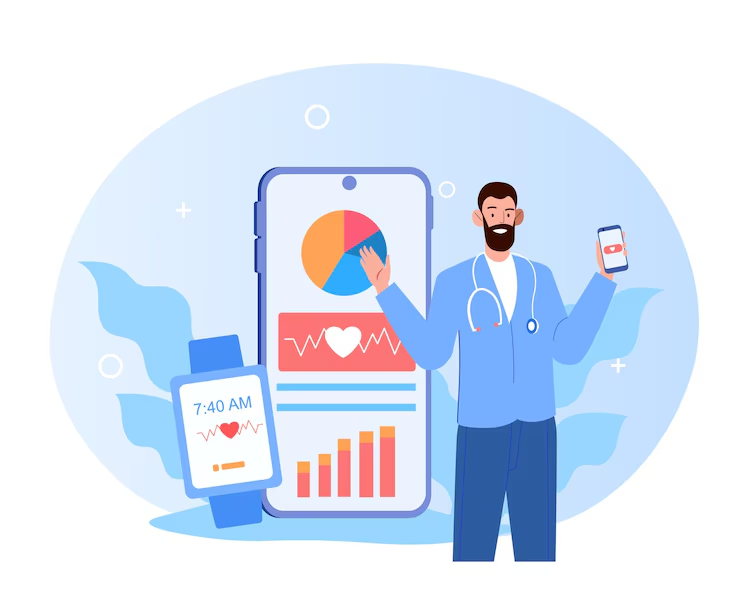What Are AI-Powered Chatbots?
AI-powered chatbots (sometimes referred to as virtual assistants or AI-driven customer service platforms) are software applications designed to interact with humans via text or speech. They utilize machine learning algorithms, Natural Language Processing (NLP), and sometimes advanced analytics to simulate human conversation patterns. The goal is to understand a user’s query or request, interpret it accurately, and respond in a way that meets their needs. Think of them as round-the-clock helpers that can solve problems, handle FAQs, and even escalate more complex issues to a human agent when necessary. But they’re not the same as the rule-based chatbots we used to see a few years back. Rather than following a strict decision tree (like “Press 1 for billing inquiry”), AI-powered chatbots employ data-driven approaches that can learn from large sets of user inputs, adapt to new situations, and fine-tune their responses over time. That means they get smarter the more you use them. If you’ve ever typed a question into a live chat window on a retail website and received an impressively human-like answer in seconds, you’ve likely interacted with one of these advanced systems.Why Are They So Popular Right Now?
Many organizations have discovered that AI-driven chatbots can handle massive volumes of queries without losing efficiency. This ability to automate responses can be particularly appealing during peak business hours or in times of crisis (like an unexpected website outage). There’s also a cost-savings element: a single AI-powered chatbot can theoretically replace (or at least drastically reduce) the workload of multiple service representatives. But beyond cost efficiency, there’s an element of customer convenience. Users don’t have to wait in line for a human agent if the chatbot can smoothly handle the request. In short, AI-powered virtual assistants slash wait times, ease the workload on your staff, and keep your customers happy.The Rise of AI in Customer Support
Now let’s examine the broader context. Why is AI in customer support taking off so dramatically? The main impetus is twofold: there’s more data than ever before, and cloud-based computing power is increasingly accessible. Companies collect mountains of customer data: purchase history, interaction logs, survey responses. Meanwhile, the growth in machine learning research has led to more refined models. Combine these two forces and you have the perfect number-crunching environment for training advanced chatbots. Plus, the pandemic years accelerated our shift to online and remote operations. Suddenly, 24/7 digital support became the default expectation. A retail brand might have a small staff that can’t possibly man the live chat queue all night. Enter automation. AI-driven customer service solutions that were once “nice-to-have” became an absolute necessity to remain competitive. Let’s be honest, though: not every company that deploys a chatbot has it all figured out. Some early adopters launched poorly trained bots that struggled to understand real-world slang or specialized domain knowledge. Others implemented chatbots but failed to integrate them with ticketing systems properly, leading to a big gap in the support chain. The good news is that, with the right implementation strategy, these pitfalls can be overcome—and the results can be transformative.How NLP Is Shaping Chatbot Evolution
A big part of chatbot automation success hinges on NLP (Natural Language Processing). And not just because it sounds fancy. NLP is precisely why chatbots can interpret unstructured text inputs and respond in a way that feels human. Here’s the thing: human language can be ambiguous. One phrase can mean multiple things depending on context, tone, or even sarcasm. NLP technology helps break down these complexities by analyzing word patterns, sentiment, and context clues.Key Components of NLP Chatbots
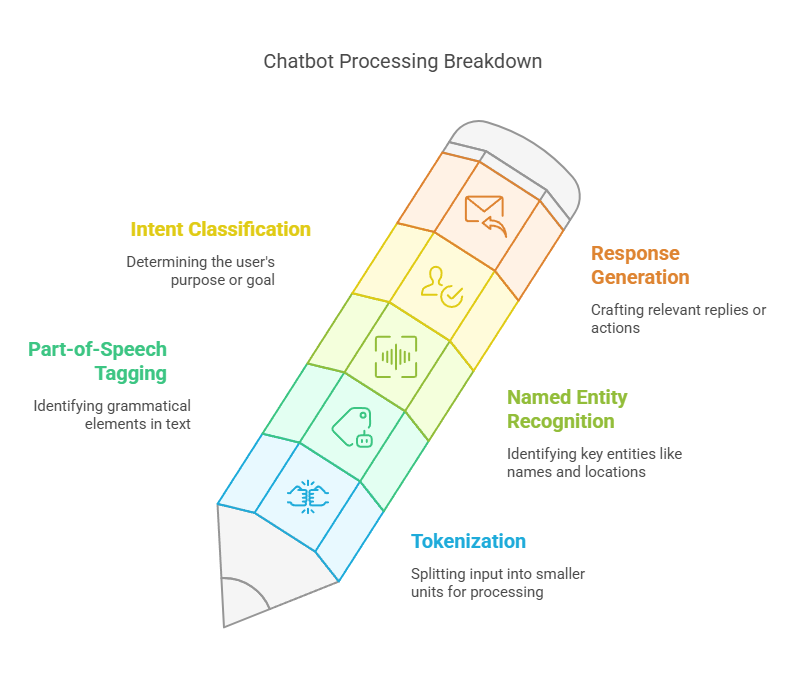
- Tokenization: Splitting user input into words or smaller units (called tokens) for easier processing.
- Part-of-Speech Tagging: Identifying nouns, verbs, adjectives, etc., which helps the chatbot understand the grammatical structure.
- Named Entity Recognition (NER): Pinpointing important keywords like person names, locations, or product references.
- Intent Classification: Determining the user’s purpose or goal (like ordering a product, resetting a password, or changing a shipping address).
- Response Generation: Crafting a relevant reply, which could be a direct answer or an action performed (like pulling up account info).
Using Chatbot Analytics to Drive Continuous Improvement
Some organizations treat their chatbot as a “set it and forget it” tool, but that’s a missed opportunity. Chatbot analytics can reveal exactly how well your AI is performing, where it’s failing, and how you can improve it. Metrics often include: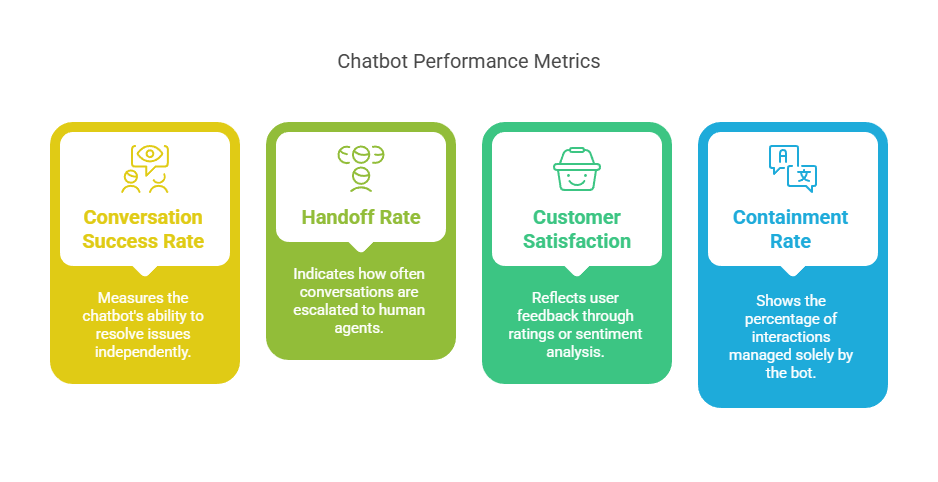
- Conversation Success Rate: How often the chatbot resolves an issue on its own.
- Handoff Rate: How frequently the conversation is transferred to a human agent.
- Customer Satisfaction: Ratings or sentiment analysis of user feedback.
- Containment Rate: Percentage of user interactions handled entirely by the bot without escalation.
Real-World Use Cases
Nothing beats real-life proof. So let’s look at a few scenarios where conversational AI and AI-driven customer service are shaking things up.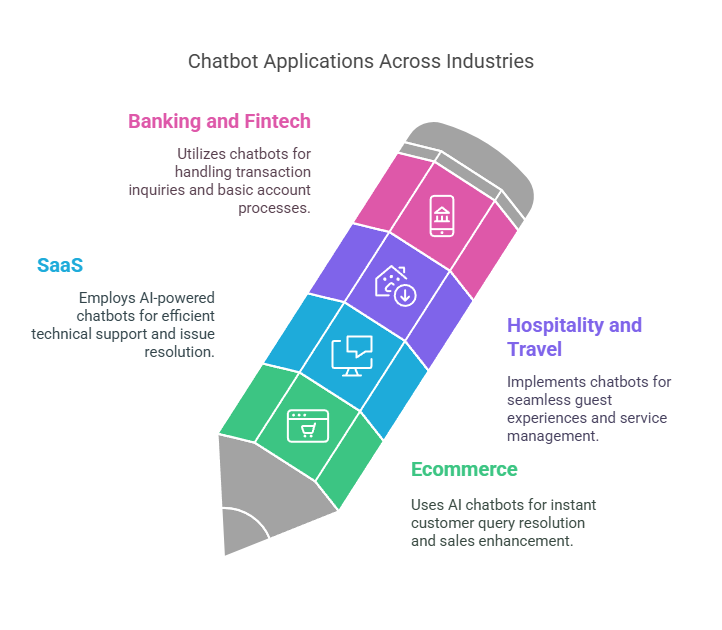
1. Ecommerce Product Guidance
Retailers often get inundated with repetitive questions: “Where’s my package?” “How do I process a return?” “Is there a discount code for new customers?” Using AI chatbots in ecommerce means these queries can be answered instantly, even at 3 AM. One online clothing brand I consulted used to have a dedicated team just to handle style inquiries—customers wanted a human to give them outfit advice. They replaced half of these roles with an advanced NLP chatbot that guided buyers through product categories, suggested complementary items, and connected them with human stylists only if the chatbot’s recommendations didn’t suffice. Sales went up, wait times went down.2. SaaS Technical Support
Software companies deal with complex user questions around bugs, feature usage, or integrations. An AI-powered chatbot can be trained on a knowledge base of known issues and solutions. The moment a user types in a complaint, the bot can search for relevant articles or known fixes. If it’s something brand new, the bot escalates it to a helpdesk system. By using these smart escalations, the entire ticketing process is more efficient.3. Hospitality and Travel
Hotels employ chatbots to handle room service requests, check-in questions, or booking changes. It’s more than just an FAQ. Some advanced bots even speak multiple languages. The result is a smoother guest experience—no more waiting on hold for hours to change a reservation. You might want to consider this if you run a hospitality brand that juggles calls from travelers in different time zones.4. Banking and Fintech
Transaction inquiries, card activations, mortgage rates—banks are flooded with daily questions. Chatbots can verify user identity, provide basic account info, and guide customers through simple processes like password resets. That’s a major upgrade from the days of phone-based IVR systems. If you’re in the financial sector, you might want to check out advanced chatbot platforms that comply with relevant security regulations. If that complexity sounds overwhelming, our team at Buildfuture can help streamline that process.Table: Traditional Chatbots vs. AI-Powered Chatbots
| Feature | Rule-Based Chatbot | AI-Powered Chatbot |
|---|---|---|
| Learning Ability | Limited (follows pre-set rules only) | Continually improves via machine learning |
| Complexity of Queries | Struggles with ambiguous, natural language | Can interpret context and handle more complex questions |
| Adaptation to New Topics | Poor unless manually revamped | Learns new subjects automatically, given sufficient training data |
| Conversation Flow | Often feels mechanical, with strict steps | More fluent and natural, thanks to NLP |
| Scalability | Challenging to scale without adding new scripts constantly | Scales efficiently by retraining algorithms and adding data sets |
| User Experience | Generally less personalized | Highly personalized, can integrate with CRM data to tailor responses |
Best Practices for Implementing AI Chatbots
Ready to give AI chatbots a go in your own organization? The following steps can help you launch an effective chatbot rather than a gimmicky one: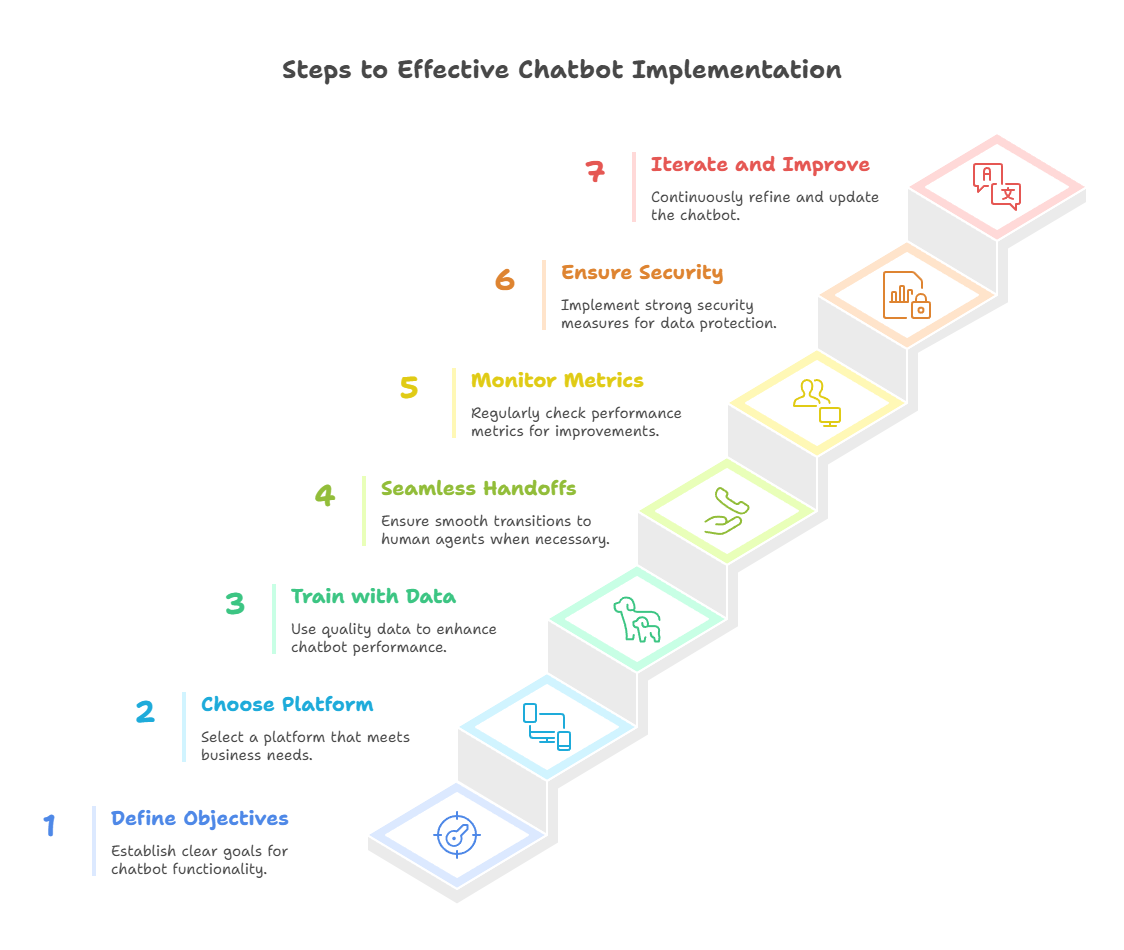
- Define Clear Objectives Ask yourself: What tasks do you want the chatbot to perform? Are you focusing on FAQ handling, ticket automation, or product recommendations? Having well-defined goals will help you create relevant conversation flows.
- Choose the Right Platform From open-source libraries to enterprise solutions, the range of chatbot development platforms can be mind-boggling. Stack up your business needs (scalability, analytics, security) against the platform’s features. If you’re struggling here, you might want to explore our specialized chatbot development guide.
- Train with Quality Data A chatbot is only as good as the data you feed it. Provide examples of actual customer interactions, integrate real domain terminology, and keep updating training sets regularly.
- Incorporate Seamless Handoffs There will be queries that only a human agent can solve. Ensure your chatbot integrates with ticketing or live agent systems so that customers aren’t left hanging.
- Monitor Performance Metrics Keep a close watch on those analytics. Tweak your chatbot’s model if you see dips in user satisfaction or a spike in conversation abandonment.
- Security and Privacy Considerations Chatbots often handle sensitive data like email addresses, order information, or even payment details. You’ll want to ensure secure data storage and compliance with relevant regulations (e.g., GDPR).
- Iterate and Improve AI chatbots are not a one-and-done implementation. As your business evolves, your chatbot should adapt, too. Regular improvements keep it fresh and relevant.
Potential Pitfalls (And How to Avoid Them)
It’s easy to get carried away by the excitement of implementing the latest AI trend. I’ll admit, I’ve personally encountered teams that rushed into chatbot development without a solid plan, hoping AI would magically fix everything. That seldom ends well. Here are a couple of common pitfalls: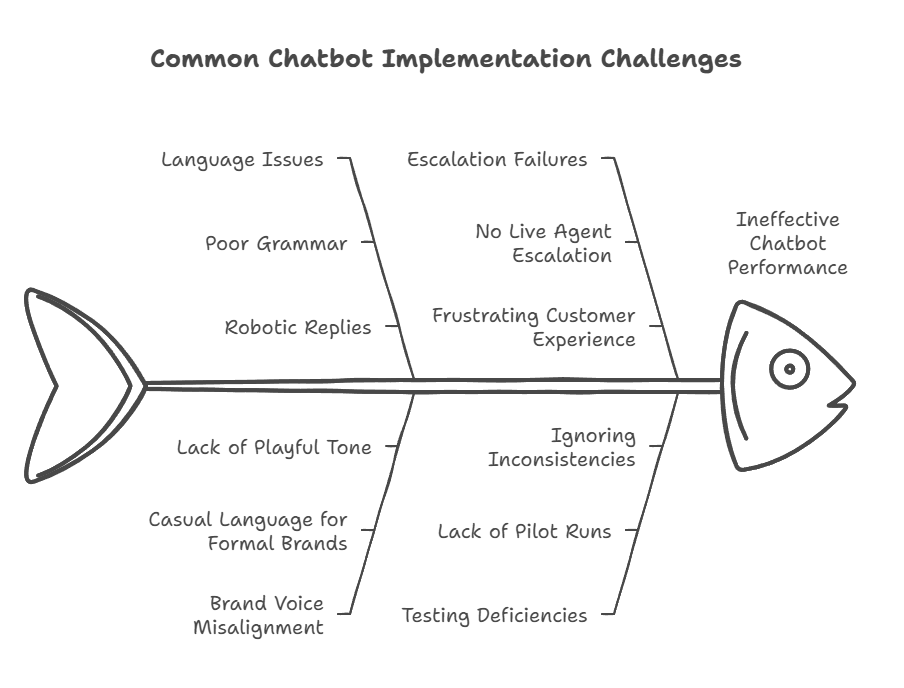
- Poor Grammar and Robotic Replies: Even the best AI can sound stilted if not properly trained. You can mitigate this by continually fine-tuning the bot’s language model.
- Overlooking Brand Voice: Your chatbot should still reflect your company’s style and tone. A playful brand might want more casual language, while a bank should maintain a more formal stance.
- Neglecting Live Agent Escalation: A chatbot that doesn’t know when to hand off complex issues can frustrate customers. Ensure a smooth escalation path to human support.
- Insufficient Testing: Launching a chatbot without real-world testing is risky. A few pilot runs or beta phases can help you catch inconsistencies.
The Benefits for E-commerce: Faster Conversions, Happier Customers
For e-commerce platforms in particular, AI chatbots in ecommerce can do more than just field questions. They can actively guide purchasing decisions. Imagine a virtual assistant that asks about your preferences and then recommends relevant product bundles, deals, or upgrades. Not only does this improve customer satisfaction, but it often drives up average order value. Plus, automated follow-ups can reduce cart abandonment rates by sending reminders or offering limited-time discounts. A friend of mine who runs a specialty tea shop online once shared that their AI-driven chatbot was able to handle “What tea pairs best with certain dietary restrictions” queries, which instantly felt more personal than browsing a generic FAQ page. Their customers loved it. If you’re looking to implement a similar approach, consider how your bot might become a personal shopper. If that’s appealing, you might want to check out our comprehensive guide on integrative AI solutions for retail.Future-Focused: Where Conversational AI Is Headed
The world of conversational AI is evolving rapidly. As voice assistants (like those integrated into smart speakers) become more popular, we can expect chatbots to extend into voice-based interactions. Customers will be able to speak their queries, and the AI-powered chatbot will respond in real-time with near-human accuracy. Additionally, chatbots may become even more proactive—predicting what customers need before they ask. Imagine opening your favorite online store’s chat, only to be greeted by an AI that says, “Looks like you might be running low on the detergent you purchased a month ago. Would you like to reorder?” We’re also witnessing deeper integrations with technologies like wearable devices and augmented reality. The dream scenario? You pop on AR glasses, say, “Where can I find the best laptop deals?” and the AI assistant overlays recommended products in your field of view. Sounds futuristic, sure, but the building blocks already exist. Let’s face it: the trajectory is firmly set. If you want to stay ahead, invest in a robust chatbot strategy now, so you’re ready to adapt as new features and technologies emerge.How to Get Started (and Succeed)
Let’s recap some of the core themes we’ve covered:- AI-powered chatbots excel in nonlinear conversations thanks to NLP and machine learning.
- They help cut wait times, streamline 24/7 support, and handle routine queries effectively.
- Chatbot analytics are crucial to refining and training these systems.
- From ecommerce to banking, the potential applications are nearly endless.
- Be mindful of pitfalls like incomplete training data and poor escalation protocols.
- There’s a bright future ahead, with voice and AR capabilities on the horizon.
Closing Thoughts
AI-powered chatbots aren’t just a trend. They’re here to stay. And as technologies like NLP, deep learning, and real-time analytics continue to progress, these virtual assistants will only become more sophisticated. At their best, they provide delightful, efficient interactions—benefiting both companies and customers alike. At their worst (when poorly implemented), they can frustrate users with clunky responses and robotic repetition. But if you do your research, set clear objectives, and continually train and refine the system, you’ll see remarkable enhancements to your customer support—often in ways you never anticipated. Once you see the positive results in customer satisfaction and revenue growth, you’ll likely wonder how you ever managed without an AI-driven customer service tool. If you’re curious about next steps, you might want to check out our in-depth resources on chatbot automation. Or if you’d like personalized guidance, our experts at Buildfuture are more than happy to guide your strategy from end to end. Think about it this way: the future of customer communication is quick, intelligent, and genuinely helpful. With AI handling the busywork, your human team can focus on the nuanced, high-value interactions that really count. And that? That’s the kind of transformation that helps a business not just keep up with the competition, but truly stand out. On that note, if you haven’t started exploring AI-powered virtual assistants for your own support channels, there’s no better time than right now. By embracing AI-powered chatbots, you’ll be well on your way to delivering the kind of fast, personalized, and memorable customer experience that keeps people coming back.

